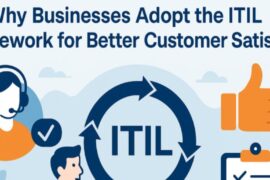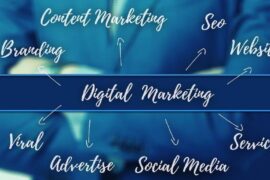In today’s digital age, a website is the cornerstone of your business’s online presence. It’s more than just a digital brochure; it’s a dynamic platform where customers interact with your brand, learn about your offerings, and form lasting impressions. Creating the best website for your business involves strategic planning, high-quality design, and seamless functionality. This article will guide you through the essential elements to build a website that stands out and drives business success.
Understand Your Target Audience
The first step in creating an exceptional website is understanding your target audience. Knowing who your visitors are and what they are looking for can help you tailor your content and design to meet their needs. A clear understanding of your audience will inform everything from the layout and design to the types of content you publish. When your website aligns with your visitors’ expectations and needs, it becomes a valuable tool for engagement and conversion.
Create Engaging Content
Content is another critical component of a successful website. Your content should be informative, engaging, and optimized for search engines. Quality content helps establish your authority in your industry and provides value to your visitors. Regularly updating your blog with relevant articles, guides, and news can keep your audience engaged and improve your site’s SEO ranking. Remember, the content you create should answer the questions your audience is asking and solve their problems.
High-Quality Web Design
High-quality web design is crucial for creating a positive user experience. A well-designed website not only looks professional but also enhances usability. An intuitive and visually appealing layout should greet visitors on your site. This includes easy navigation, clear calls-to-action, and a cohesive color scheme that reflects your brand identity. For instance, SaaS design services often emphasize clean, modern interfaces that are user-friendly and efficient. This approach can be applied to any business website to ensure that it’s attractive and functional.
Optimize for Search Engines (SEO)
Search engine optimization (SEO) is essential for increasing your website’s visibility. By optimizing your site for search engines, you can attract more organic traffic. This involves using relevant keywords, creating high-quality content, and ensuring your site is technically sound. Site speed, mobile-friendliness, and secure connections (HTTPS) are significant in SEO. A well-optimized website with the help of an SEO company can rank higher in search engine results, making it easier for potential customers to find you.
Ensure Mobile Responsiveness
Another critical aspect of creating a great website is ensuring it is mobile-responsive. With the increasing use of smartphones and tablets, your website must look and function well on all devices. A responsive design adjusts the layout and content based on the screen size, providing a consistent user experience across desktops, laptops, tablets, and mobile phones. This not only improves user satisfaction but also positively impacts your SEO rankings.
Integrate Social Media
Integrating social media is a powerful way to enhance your website’s reach and engagement. You can increase your online presence and drive more traffic by linking your social media profiles to your website. Social media buttons allow visitors to share your content easily, expanding your audience organically. Additionally, embedding social media feeds can keep your website content fresh and encourage visitors to follow you on different platforms.
Prioritize Security
Security is a critical concern for any website. Protecting your site and your visitors’ data is paramount. Implementing SSL certificates, secure payment gateways, and regularly updating your software can help prevent breaches and build trust with your audience. A secure website protects your business and reassures visitors that their information is safe.
Enhance Accessibility
One often overlooked aspect of web design is accessibility. Making your website accessible to all users, including those with disabilities, is ethical and can expand your audience. This involves ensuring your site is navigable by the keyboard, providing text alternatives for images, and using accessible color contrasts. An accessible website demonstrates your commitment to inclusivity and can improve everyone’s user experience.
Utilize Analytics and Monitoring
Analytics and monitoring are essential for understanding how your website is performing. Using tools like Google Analytics, you can track visitor behavior, understand which pages are most popular, and identify areas for improvement. Regularly reviewing your analytics data can help you make informed decisions about content updates, design changes, and marketing strategies.
Incorporate Customer Feedback
Incorporating customer feedback into your website development process can also lead to significant improvements. Encourage visitors to leave reviews and suggestions. This feedback can provide valuable insights into what works well and what needs improvement. Listening to your audience and making necessary adjustments can enhance user satisfaction and loyalty.
Conclusion
Creating the best website for your business requires a holistic approach encompassing design, content, SEO, security, and user experience. By focusing on these critical areas, you can build a website that attracts visitors and converts them into loyal customers. A well-crafted website is an investment that can drive your business’s growth and success in the digital landscape.































